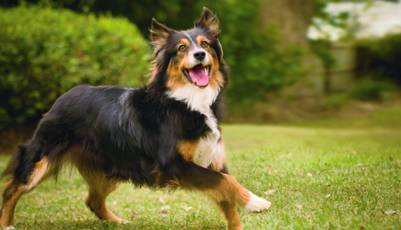Optimum Perfect Pet Pearly Whites

August is Dental Awareness Month, a month dedicated to raising awareness about teeth and overall dental health. Dental care and hygiene is not only important for humans, but also our four-legged friends, whose teeth are sometimes forgotten and neglected by their owners.
The newly reformulated, OPTIMUM™ pet food brand, is utilising Dental Awareness month to assist in raising awareness of dog and cat dental health among pet owners.
Plaque build up, gingivitis, & dental disease can occur among animals. The OPTIMUM™ range with Macro-Nutrient Profile (MNP™) not only provides an important dental defence system, it has also been developed to deliver a specific nutritional balance of protein, fat and carbohydrates to suit each dog and cat's life stage or lifestyle.
OPTIMUM™ Brand Manager, Natalie McWilliam, says that dogs' and cats' teeth are similar in structure to humans' teeth; comprising canines, molars, premolars and incisors, yet differ in shape and number.
"Just as humans need to manage their oral health, so do pets. The reformulated dry product includes a specifically designed dental system that has been proven to help reduce plaque build up and help protect teeth and gums," McWilliam said.
The sodium tri-polyphosphate ingredient in the OPTIMUM™ range with MNP™ binds the calcium, which is present in saliva and prevents it from forming plaque on the tooth surface. The calcium is then carried to the stomach where it is absorbed by the body to strengthen teeth and bones, as well as contribute to the other functions where calcium is vital in the body.
Whilst delivering a product pets will love, the OPTIMUM™ range with MNP™ is specifically matched to the unique nutritional needs of both cats and dogs, providing healthy energy levels and maintaining superior health.
Interesting OPTIMUM™ facts about cats' and dogs' teeth and oral functioning
The newly reformulated, OPTIMUM™ pet food brand, is utilising Dental Awareness month to assist in raising awareness of dog and cat dental health among pet owners.
Plaque build up, gingivitis, & dental disease can occur among animals. The OPTIMUM™ range with Macro-Nutrient Profile (MNP™) not only provides an important dental defence system, it has also been developed to deliver a specific nutritional balance of protein, fat and carbohydrates to suit each dog and cat's life stage or lifestyle.
OPTIMUM™ Brand Manager, Natalie McWilliam, says that dogs' and cats' teeth are similar in structure to humans' teeth; comprising canines, molars, premolars and incisors, yet differ in shape and number.
"Just as humans need to manage their oral health, so do pets. The reformulated dry product includes a specifically designed dental system that has been proven to help reduce plaque build up and help protect teeth and gums," McWilliam said.
The sodium tri-polyphosphate ingredient in the OPTIMUM™ range with MNP™ binds the calcium, which is present in saliva and prevents it from forming plaque on the tooth surface. The calcium is then carried to the stomach where it is absorbed by the body to strengthen teeth and bones, as well as contribute to the other functions where calcium is vital in the body.
Whilst delivering a product pets will love, the OPTIMUM™ range with MNP™ is specifically matched to the unique nutritional needs of both cats and dogs, providing healthy energy levels and maintaining superior health.
Interesting OPTIMUM™ facts about cats' and dogs' teeth and oral functioning
MORE





